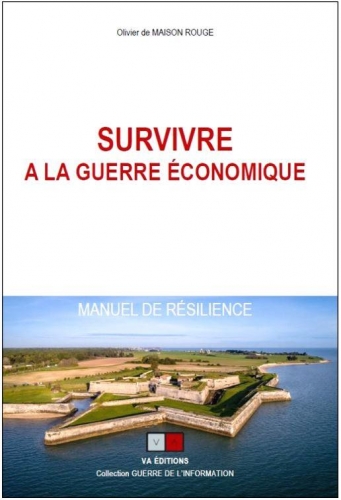Conscients de l’obsolescence des clivages politiques et socio-économiques (Droite – Gauche, bourgeoisie – prolétariat), certains chercheurs proposent des nouvelles lignes de démarcation, culturelles, métapolitiques, voire anthropologiques. David Goodhart suggère une distinction entre les « Partout » (anywhere) et les « Quelque Part » (somewhere), et à l’intérieur de ces deux clans des sous-groupes extrémistes : les « Villageois planétaires » et les « Autoritaristes endurcis ».
Les pages qui suivent s’inspirent largement du livre de Goodhart. Je reprendrai désormais ces expressions sans mettre les guillemets. Quant à l’adjectif « résistible », il renvoie à Bertolt Brecht et à sa pièce La résistible ascension d’Arturo Ui. Il importe en effet de s’interroger sur la domination grandissante des types humains Partout et Villageois planétaires et sur la possibilité de la freiner ou d’y mettre un terme à la faveur d’une « noomachie » conduite par un « bloc contre-hégémonique », pour reprendre les termes d’Alexandre Douguine (1).
Goodhart s’appuie sur les résultats d’enquêtes et de sondages. Certes, les statistiques comportent une part d’« illusion » inhérente au « règne de la quantité » (René Guénon). Mais les chiffres qui parsèment le livre correspondent assez bien aux tendances actuelles telles que les ressentent nos lectrices et lecteurs. Ils rejoignent mon propre ressenti pour les trois pays d’Europe francophone où j’ai vécu et pour les soixante dernières années. Goodhart cite d’ailleurs des travaux effectués en Suisse, ainsi que des recherches menées aux États-Unis. La portée de son ouvrage dépasse largement le cadre du Royaume-Uni.

C’est au seuil de la cinquantaine que je découvre Internet après avoir grandi avec un père représentant pour un fabricant de papier carbone. Je suis un produit de l’exode rural, un fils d’immigrés wallons venus s’installer à Bruxelles en février 1940. Après la traite des Noirs et avant les vagues migratoires issues successivement des rives Nord et Sud de la Méditerranée, le dépeuplement des campagnes constitue une des formes d’arrachement des Quelque Part à leur milieu ancestral pour en faire des Partout aux yeux desquels on fait miroiter le prétendu El Dorado citadin.
En moins de deux décennies, certains vainqueurs de la Seconde Guerre mondiale ont perdu leurs empires (2) ultra-marins. Ce paradoxe a marqué la génération des enfants nés vers 1950. Chez ceux qui se sont assimilés au clan des Partout, on observe une sorte de culpabilité post-coloniale et le désir d’imposer une « relecture flagellatrice » de l’histoire européenne, selon l’excellente formule d’un rédacteur d’Éléments.
Dans la revue Culture Normande (3), Didier Patte distingue « la notion idéologique de colonialisme » et « la réalité certes ambiguë de la colonisation ». Entre les deux persiste une « équivoque soigneusement entretenue ». Certes, la colonisation est riche en excès et abus en tous genres, mais elle a aussi permis la construction d’écoles, d’hôpitaux, d’infrastructures routières et ferroviaires, comme l’a souligné l’acteur Roger Hanin peu avant son décès. Les Européens d’aujourd’hui n’ont pas à battre leur coulpe pour des exactions commises par leurs ancêtres issus de cinq ou six pays (4) riverains de l’Atlantique et de la Mer du Nord. Goodhart considère l’enseignement supérieur universitaire comme le principal foyer de gestation de la mentalité des Partout et des Villageois planétaires. Il note cependant qu’une fraction de la jeunesse semble avoir déjà basculé dans le clan des Partout avant même son entrée à l’université. Cela n’est pas surprenant pour qui se remémore le tourbillon de réformes qui s’est abattu, dans les années 1970, sur les études secondaires.

Jusqu’en 1965, j’ai vécu toute ma scolarité dans un régime ultra-directif, et ceci malgré la variété de la coloration idéologique des écoles : cycle primaire dans un établissement communal d’orientation socialiste, un premier athénée dirigé par un franc-maçon notoire et un second athénée à la tête duquel se trouve un préfet membre des Scriptores Catholici. Même après Mai 68 et ses assemblées libres peu mouvementées – il est vrai – en comparaison des événements parisiens, les stages de l’Université de Bruxelles en vue d’obtenir l’agrégation restent marqués par une pédagogie autoritaire. Nous sommes alors en 1969.
Mais lorsqu’en février 1972, après un passage dans une école privée (non confessionnelle) de Genève j’entre dans l’enseignement officiel du canton, la découverte d’une pédagogie laxiste et permissive constitue un choc que je vis assez mal. À Genève sévissent alors ceux qu’Éric Zemmour appelle les « pédagogistes » : des concepteurs de bureau qui élaborent des théories sacrifiant toute forme de discipline sur l’autel de la « créativité », mais qui ne se confrontent jamais aux classes de vingt-cinq adolescents guettant la première occasion de perturber le cours.
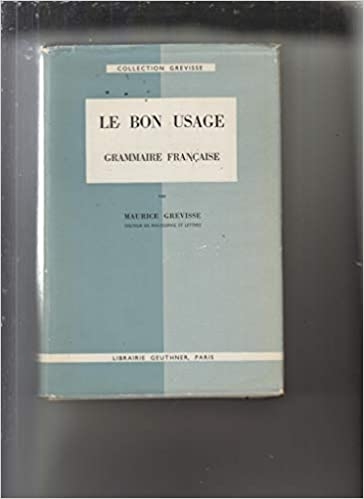 Dans toute l’Europe francophone apparaît brusquement « rénové », c’est-à-dire en rupture avec l’autorité magistrale, les techniques de dressage (Roland Barthes qualifie l’orthographe de « fasciste »), l’enracinement dans l’histoire nationale et l’apprentissage des langues anciennes (latin, grec). On retrouve dans la mentalité des Partout cette hantise de la « réalisation de soi » au mépris de toute règle contraignante, de toute référence au passé et de tout sentiment d’appartenance à une communauté organique.
Dans toute l’Europe francophone apparaît brusquement « rénové », c’est-à-dire en rupture avec l’autorité magistrale, les techniques de dressage (Roland Barthes qualifie l’orthographe de « fasciste »), l’enracinement dans l’histoire nationale et l’apprentissage des langues anciennes (latin, grec). On retrouve dans la mentalité des Partout cette hantise de la « réalisation de soi » au mépris de toute règle contraignante, de toute référence au passé et de tout sentiment d’appartenance à une communauté organique.
Avant d’examiner comment ces Partout deviennent des Villageois planétaires au contact du monde universitaire, soulignons que les pédagogies non-directives inaugurent, pour le demi-siècle suivant, une série de bouleversements sociétaux qui désarçonnent les Quelque Part en raison de leur rapidité et de leur cumul relayé par les media : dépénalisation de l’avortement et de l’euthanasie, abolition de la peine de mort, mariage pour tous, GPA, PMA. Alors que chacune de ces mesures nécessite une approche singulière et un long temps de réflexion, nous sommes désormais tenus de les accepter en bloc, sans réserve ni délai, sous peine d’être traités de réactionnaires. Il en résulte un « retour de bâton », un « puissant contrecoup » qui génère les « Autoritaristes endurcis ». Goodhart se réfère ici à sa collègue Karen Stenner, titulaire d’un doctorat en psychologie politique, qui a parfaitement saisi cette dialectique des extrêmes analogue au binôme alchimique solve – coagula (dissolution – durcissement).
Contrairement à ce qu’affirme Goodhart à propos de l’enseignement supérieur, le système des campus résidentiels (un internat jouxtant les salles de cours et les amphithéâtres) n’est pas une exception britannique. Dans la région liégeoise, où je vis depuis 2015, je connais au moins trois hautes écoles doublées d’un pensionnat. En outre, toutes les villes universitaires belges renferment un important parc immobilier de logements estudiantins (en Belgique on les appelle les kots). La pratique de la colocation (à deux ou à plusieurs) est fréquente et favorise les contacts inter-culturels et inter-ethniques.
 À l’époque où j’étudiais à l’Université de Bruxelles, il y avait deux cités universitaires : l’une pour les garçons au cœur du campus, l’autre pour les jeunes filles légèrement en dehors. Ainsi pouvaient déjà se côtoyer, vers 1970, des jeunes provenant de toutes les provinces du Royaume. Le programme Erasmus, d’abord à l’échelon européen, puis au plan mondial, accentue ensuite cet élargissement des horizons et l’impression que « le monde est un village », pour reprendre le titre d’une émission créée par la radio belge francophone en 1998. « La massification de l’enseignement supérieur », l’émergence d’un « secteur universitaire hypertrophié » : voilà des phénomènes qui remontent aux années 1960, vont de pair avec une disqualification du travail manuel et ipso facto avec l’immigration fournissant au patronat une armée de réserve, une classe ouvrière de rechange.
À l’époque où j’étudiais à l’Université de Bruxelles, il y avait deux cités universitaires : l’une pour les garçons au cœur du campus, l’autre pour les jeunes filles légèrement en dehors. Ainsi pouvaient déjà se côtoyer, vers 1970, des jeunes provenant de toutes les provinces du Royaume. Le programme Erasmus, d’abord à l’échelon européen, puis au plan mondial, accentue ensuite cet élargissement des horizons et l’impression que « le monde est un village », pour reprendre le titre d’une émission créée par la radio belge francophone en 1998. « La massification de l’enseignement supérieur », l’émergence d’un « secteur universitaire hypertrophié » : voilà des phénomènes qui remontent aux années 1960, vont de pair avec une disqualification du travail manuel et ipso facto avec l’immigration fournissant au patronat une armée de réserve, une classe ouvrière de rechange.
Depuis 1953, dans le quartier où mes parents font construire leur maison, les immeubles poussent comme des champignons grâce à des maçons italiens. Une décennie plus tard, c’est un chauffeur originaire d’Oujda qui m’emmène de Molenbeek au campus situé à l’autre bout de la capitale. Sans omettre l’importance de la communauté turque dans des communes comme Saint-Josse ou Schaerbeek, ainsi que dans certaines régions wallonnes, c’est l’accord belgo-marocain de 1964 qui constitue le principal fondement de la politique belge d’immigration. L’immigration est une des « pommes de discorde » entre les deux clans et a fortiori entre leurs sous-groupes extrémistes.
Sans faire la moindre concession au politiquement correct, Goodhart analyse le problème avec sérénité et ne jette jamais de l’huile sur le feu. En conclusion, il espère même la réconciliation des deux clans qui sont « les deux moitiés de l’âme politique de l’humanité ». Il faut néanmoins pointer du doigt quelques grossières erreurs de politique migratoire, en Belgique comme en France. Le regroupement familial, qui reconstitue chez les immigrés, sinon la tribu, au moins ce que les ethnologues appellent la « grande famille », est autorisé au moment même où notre famille « nucléaire » (noyau père – mère – enfants) commence à se décomposer.
De surcroît, cette mesure coïncide avec le début des réformes sociétales signalées plus haut et propres à heurter l’atavisme musulman de ces populations, à le réveiller sous des formes « Autoritaristes endurcies ». De nombreux jeunes Belges d’origine marocaine fréquentent aujourd’hui les universités. Des jeunes filles voilées entreprennent des études aussi diverses que le droit, le commerce, la logopédie ou la biologie médicale. On a voulu en faire des Partout mais elles semblent rejoindre les rangs des Quelque Part dans l’adhésion à un certain conservatisme.

Selon Goodhart, ce phénomène concerne aussi une partie de la jeunesse autochtone, celle qu’il nomme la « génération Z » (jeunes filles et garçons nés après 2001). Cela donne l’espoir d’une résilience face au traumatisme de la « grande libéralisation » qui, depuis une quarantaine d’années, se présente volontiers comme un processus aussi irréversible que la succession des saisons. Après tout, parmi les 7,3 milliards de Terriens, « à peine plus de 3 % vivent hors de leur pays de naissance ». Dans ces 200 ou 250 millions de personnes, beaucoup se situent dans une zone intermédiaire entre les deux clans. La planète est donc gouvernée par une minorité de Partout et de Villageois planétaires : nouvelles élites « créatives » de l’Occident post-moderne et milliardaires émergents de l’ancien Tiers Monde.
Les « secteurs » et les « milieux » de la « création » sont, selon Goodhart, avec les universités et la caste médiatique, les plus importants fournisseurs de Partout et de Villageois planétaires. Le flou qui entoure la notion de « création » constitue à mon avis le seul point faible du livre de Goodhart. Je suppose qu’il utilise le mot « création » dans une acception large, non limitée aux arts et aux lettres. Je présume qu’il envisage aussi toute l’industrie du divertissement : tourisme, mode, sport, cinéma, variétés. J’espère pouvoir l’un ou l’autre article à l’application de la grille de lecture de Goodhart dans certains domaines sportifs (5) ou dans le secteur de la chanson française « à texte » (6).
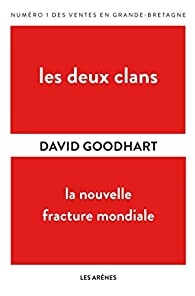 Je recommande tout spécialement, dans le livre de Goodhart, la lecture de la page 251. L’auteur y développe une critique de l’égalitarisme qui repose sur la distinction entre l’équité et l’équivalence. Les sondages montrent que les Quelque Part acceptent les réformes sociétales de la « grande libéralisation » dans la mesure où les circonstances les rendent équitables : par exemple, refuser l’avortement de confort, mais tolérer l’interruption volontaire d’une grossesse non désirée. En revanche, l’équivalence est érigée en dogme par les Partout qui considèrent que l’enseignement ne doit pas « remplir les cerveaux », mais « libérer ce qui s’y trouve déjà ». En d’autres termes, n’importe qui est capable de faire n’importe quoi en n’importe quel moment ou endroit. Cette vision du monde est à rebours de la conception du « temps qualifié » développée par Jean Phaure dans le sillage de René Guénon qui, de son côté, parle des « déterminations qualitatives de l’espace ». Ici s’impose également un renvoi à Julius Evola et à son chapitre « L’Espace, le Temps, la Terre » dans Révolte contre le monde moderne.
Je recommande tout spécialement, dans le livre de Goodhart, la lecture de la page 251. L’auteur y développe une critique de l’égalitarisme qui repose sur la distinction entre l’équité et l’équivalence. Les sondages montrent que les Quelque Part acceptent les réformes sociétales de la « grande libéralisation » dans la mesure où les circonstances les rendent équitables : par exemple, refuser l’avortement de confort, mais tolérer l’interruption volontaire d’une grossesse non désirée. En revanche, l’équivalence est érigée en dogme par les Partout qui considèrent que l’enseignement ne doit pas « remplir les cerveaux », mais « libérer ce qui s’y trouve déjà ». En d’autres termes, n’importe qui est capable de faire n’importe quoi en n’importe quel moment ou endroit. Cette vision du monde est à rebours de la conception du « temps qualifié » développée par Jean Phaure dans le sillage de René Guénon qui, de son côté, parle des « déterminations qualitatives de l’espace ». Ici s’impose également un renvoi à Julius Evola et à son chapitre « L’Espace, le Temps, la Terre » dans Révolte contre le monde moderne.
Comme les Partout et les Quelque Part de Goodhart, les « races de l’esprit » d’Evola reposent sur des visions du monde transversales qui dépassent le sfractures sociales ou ethniques. Un compromis est-il possible entre les deux clans ? Il faudrait pour cela « que les Partout cessent de prendre de haut les Quelque Part, blancs ou non, qu’ils apprennent à accepter la légitimité d’opinions contraires ». Les Quelque Part devraient se rendre compte qu’ils « ne peuvent pas exercer le pouvoir politique en braillant des insultes depuis le banc de touche – se sentir pris de haut n’est pas une raison suffisante pour porter un démagogue inexpérimenté à la présidence ».
telle pourrait être une conclusion respectueuse de l’état d’esprit de David Goodhart toujours ouvert au dialogue. Mais l’éventualité d’une « fracture » non résorbable n’est pas à exclure. Il y aurait alors, d’un côté, la mondialisation « sans racines et où plus rien n’est sacré », l’idéologie des Villageois planétaires où se dissoudraient les identités locales, nationales et continentales. En face se dresserait un « bloc contre-hégémonique », parfois exempt de durcissements monolithiques. Ce serait une sorte de fédérations d’empires se respectant les uns les autres, bâtis sur les affinités ethniques de leurs populations et renouant avec leur héritages spirituels. Ainsi serait l’Europe dans ce « nouvel ordre de la Terre » : un Phénix renaissant des cendres de l’Union européenne, un « empire sans impérialisme », selon la belle formule que nous a malheureusement confisquée Manuel Barroso.
Daniel Cologne
Notes
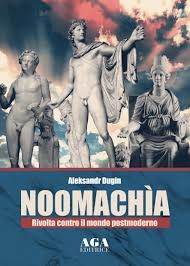 1 : Voir dans Synthèse nationale (numéro d’hiver 2020), la recension de deux livres d’Alexandre Douguine par Georges Feltin-Tracol. Selon l’étymologie grecque, « noomachie » signifie « combat spirituel ».
1 : Voir dans Synthèse nationale (numéro d’hiver 2020), la recension de deux livres d’Alexandre Douguine par Georges Feltin-Tracol. Selon l’étymologie grecque, « noomachie » signifie « combat spirituel ».
2 : Cet impérialisme moderne n’a rien à voir avec l’idée traditionnelle d’imperium développée par Julius Evola.
3 : n° 66, février 2020, p. 28.
4 : Aux cinq grandes puissances coloniales d’Europe occidentale, j’ajoute la Belgique qui, avant de coloniser le Congo sous Léopold II, avait déjà des vues sur la Chine et le Guatemala sous Léopold Ier.
5 : Il est clair que l’« arrêt Bosman » (1995) a fait basculer le football du clan des Quelque Part au clan des Partout. Le joueur liégeois Jean-Marc Bosman s’est vu refuser un transfert à Dunkerque et a saisi la Cour européenne de justice qui lui a donné raison au nom de la libre circulation des travailleurs dans l’UE.
6 : On peut observer chez Brel, Aznavour, Nougaro et bien d’autres un mélange de Quelque Part et de Partout. Nougaro est sublime quand il célèbre sa ville natale de Toulouse mais, par ailleurs, il dénie à la race blanche l’aptitude à l’élan mystique :
« Quel manque de pot
Je suis blanc de pot
Rien ne luit là-haut
Les anges zéro
Je suis blanc de peau. »
On retrouve ici le complexe de culpabilité post-coloniale propre aux Partout.
• David Goodhart, Les deux clans. La nouvelle fracture mondiale, Les Arènes, 2019, 400 p., 20,90 € (version originale anglaise parue à Londres en 2016).


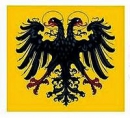
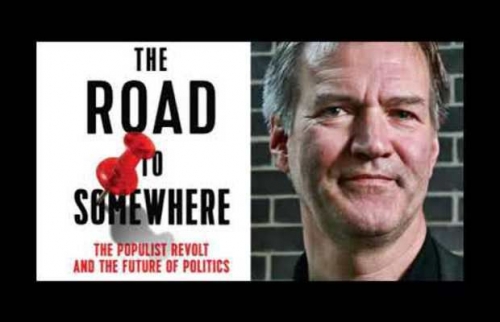

 del.icio.us
del.icio.us
 Digg
Digg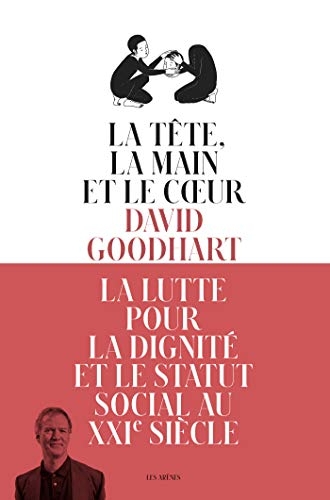
 Après bien d’autres, d’ailleurs cités par l’auteur (y compris Charles Murray
Après bien d’autres, d’ailleurs cités par l’auteur (y compris Charles Murray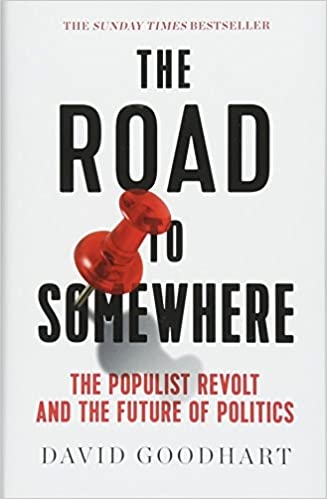 C’est la sélection croissante, au cours de 70 dernières années, sur les performances cognitives dans l’éducation supérieure qui a abouti à la création d’une classe cognitive, renforcée aujourd’hui par l’endogamie cognitive (combinant héritage génétique et ressources pour l’éducation), rendue plus facile avec l’accès croissant des femmes à l’éducation supérieure. Dans Coming Apart , Charles Murray avait montré que Princeton et Yale accueillaient plus d’étudiants provenant du dernier centile que des 6 premiers déciles de revenu.
C’est la sélection croissante, au cours de 70 dernières années, sur les performances cognitives dans l’éducation supérieure qui a abouti à la création d’une classe cognitive, renforcée aujourd’hui par l’endogamie cognitive (combinant héritage génétique et ressources pour l’éducation), rendue plus facile avec l’accès croissant des femmes à l’éducation supérieure. Dans Coming Apart , Charles Murray avait montré que Princeton et Yale accueillaient plus d’étudiants provenant du dernier centile que des 6 premiers déciles de revenu.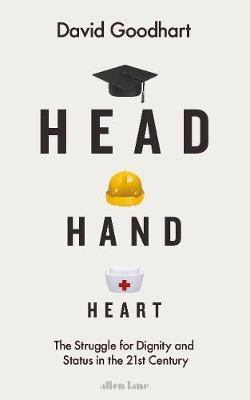 Et en politique
Et en politique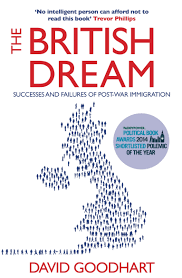 L’économie du soin a un double problème : il est de moins en moins attractif et ceux qui y travaillent s’en vont, souvent désenchantés. Les hommes, particulièrement ceux qui ont un faible statut, ont perdu, sans pouvoir rien mettre à la place, leur rôle principal qui était celui de gagner l’argent de la famille. Un nombre disproportionné de métiers qui ne peuvent être automatisés sont traditionnellement occupés par des femmes, métiers qui n’attirent pas les hommes. Daniel Susskind, dans A World Without Work, publié en 2020, rapporte les résultats d’une enquête au Royaume-Uni selon laquelle « la plupart des hommes qui ont perdu leur emploi industriel préfèrent ne pas travailler que de prendre un “pink collar work” » (traduction personnelle).
L’économie du soin a un double problème : il est de moins en moins attractif et ceux qui y travaillent s’en vont, souvent désenchantés. Les hommes, particulièrement ceux qui ont un faible statut, ont perdu, sans pouvoir rien mettre à la place, leur rôle principal qui était celui de gagner l’argent de la famille. Un nombre disproportionné de métiers qui ne peuvent être automatisés sont traditionnellement occupés par des femmes, métiers qui n’attirent pas les hommes. Daniel Susskind, dans A World Without Work, publié en 2020, rapporte les résultats d’une enquête au Royaume-Uni selon laquelle « la plupart des hommes qui ont perdu leur emploi industriel préfèrent ne pas travailler que de prendre un “pink collar work” » (traduction personnelle). S’il faut préserver les procédures de sélection méritocratiques, il faut aussi veiller à répartir respect et statut plus équitablement en élargissant les sources de réussite et en élevant le statut de ceux qui ne vont pas à l’université. Les dernières recherches sur les capacités cognitives pourraient nous y aider. Une étude menée à l’université Carnegie Mellon aux États-Unis définit trois types de styles cognitifs : la verbalisation (journalistes, avocats…) ; la visualisation spatiale (ceux qui pensent analytiquement : ingénieurs, mathématiciens…) ; la visualisation des objets (artistes…) qui ont tendance à penser un contexte plus large. Mais la diversité doit aussi s’appliquer aux idéologies et valeurs politiques.
S’il faut préserver les procédures de sélection méritocratiques, il faut aussi veiller à répartir respect et statut plus équitablement en élargissant les sources de réussite et en élevant le statut de ceux qui ne vont pas à l’université. Les dernières recherches sur les capacités cognitives pourraient nous y aider. Une étude menée à l’université Carnegie Mellon aux États-Unis définit trois types de styles cognitifs : la verbalisation (journalistes, avocats…) ; la visualisation spatiale (ceux qui pensent analytiquement : ingénieurs, mathématiciens…) ; la visualisation des objets (artistes…) qui ont tendance à penser un contexte plus large. Mais la diversité doit aussi s’appliquer aux idéologies et valeurs politiques.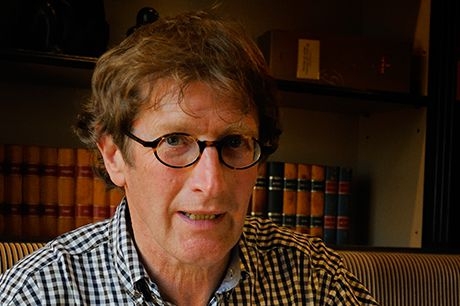

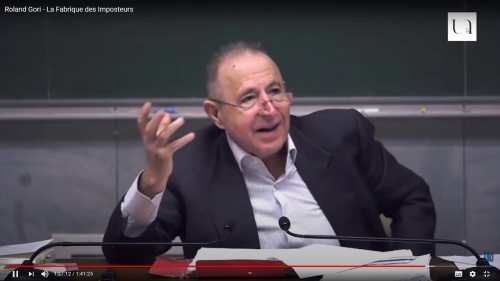
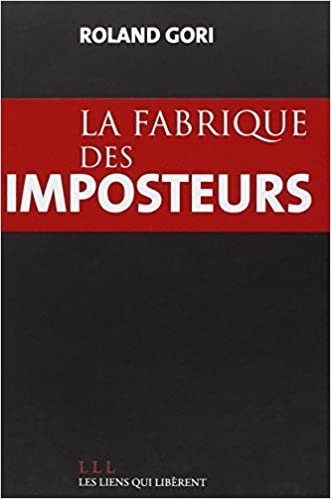
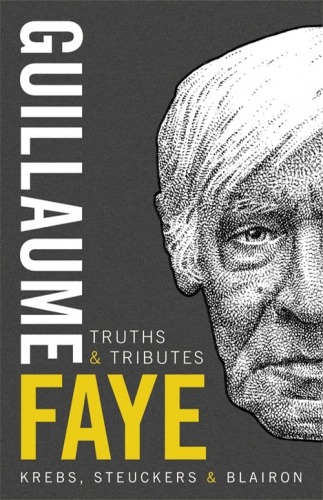
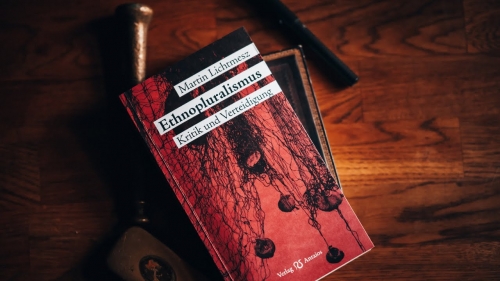
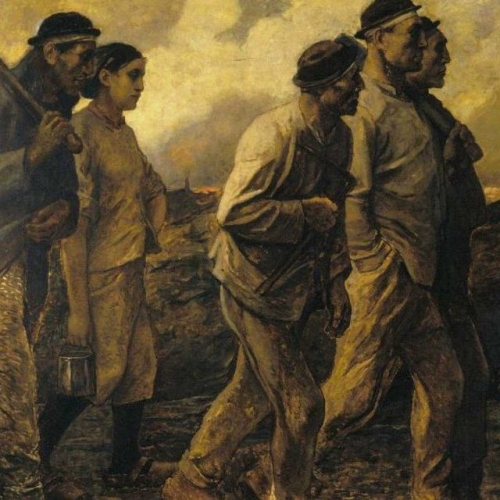
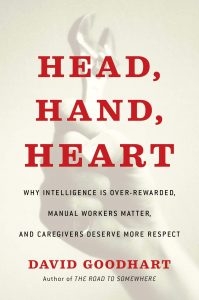 David Goodhart
David Goodhart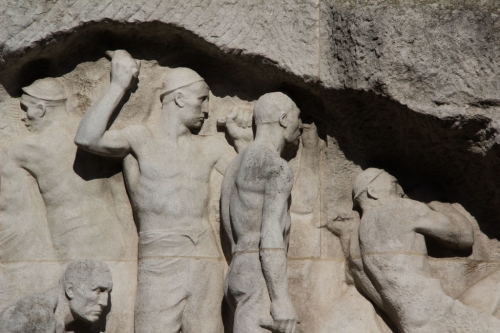 Vocation
Vocation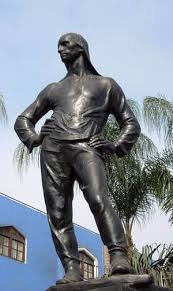 The three top professions are medicine, the law, and the clergy. If you feel called to do any of these jobs, don’t pass them up. As far as enlisting, I must state upfront that there are many ways to serve your country outside of the infantry. Some further advice on this can be found
The three top professions are medicine, the law, and the clergy. If you feel called to do any of these jobs, don’t pass them up. As far as enlisting, I must state upfront that there are many ways to serve your country outside of the infantry. Some further advice on this can be found 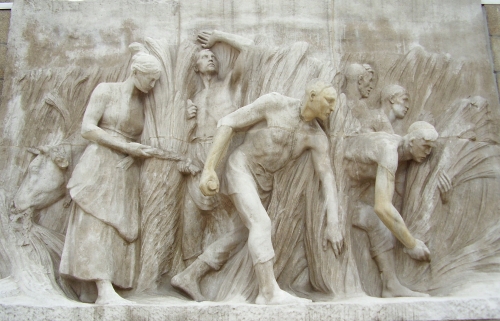

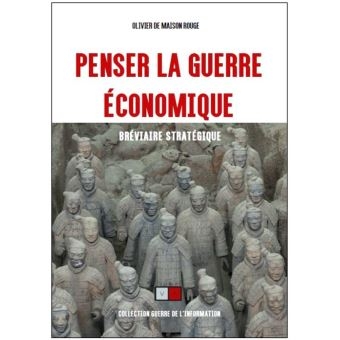
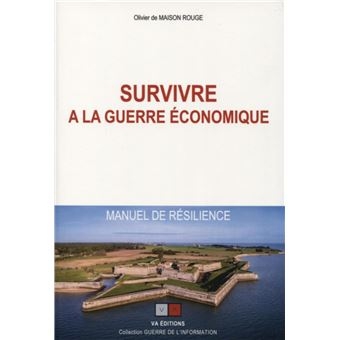

 ¿Cómo surgió la idea de escribir el librito “Vascos y Navarros”?
¿Cómo surgió la idea de escribir el librito “Vascos y Navarros”?

 Lo que hace el Gobierno Vasco para la defensa de la lengua vasca me parece bastante acertado, a pesar de todas las acciones caricaturescas y desprovistas de sentido que han sido tomadas en contra del idioma castellano o -mejor dicho- del español, una de las dos o tres lengua más habladas del mundo. Ya sabemos que el idioma no es suficiente, pero además de esto no se debe esconder que los resultados de las políticas a favor del euskera son más bien escasos. La realidad es que no hay nación o patria posible sin un legado histórico combinado a un consentimiento y una voluntad de existencia por parte del pueblo. Nicolas Berdiaev y otros autores europeos famosos como Ortega y Gasset hablaban de unidad o comunidad de destino histórico. Pues bien, sin la combinación armoniosa del fundamento histórico-cultural y del factor voluntarista o consensual, sin esos dos ejes, no puede haber nación. Y por eso ya no hay hoy una verdadera nación española como no hay tampoco hoy verdaderas nacionalidades o naciones pequeñas dentro de España.
Lo que hace el Gobierno Vasco para la defensa de la lengua vasca me parece bastante acertado, a pesar de todas las acciones caricaturescas y desprovistas de sentido que han sido tomadas en contra del idioma castellano o -mejor dicho- del español, una de las dos o tres lengua más habladas del mundo. Ya sabemos que el idioma no es suficiente, pero además de esto no se debe esconder que los resultados de las políticas a favor del euskera son más bien escasos. La realidad es que no hay nación o patria posible sin un legado histórico combinado a un consentimiento y una voluntad de existencia por parte del pueblo. Nicolas Berdiaev y otros autores europeos famosos como Ortega y Gasset hablaban de unidad o comunidad de destino histórico. Pues bien, sin la combinación armoniosa del fundamento histórico-cultural y del factor voluntarista o consensual, sin esos dos ejes, no puede haber nación. Y por eso ya no hay hoy una verdadera nación española como no hay tampoco hoy verdaderas nacionalidades o naciones pequeñas dentro de España. 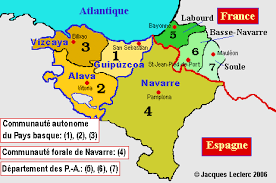
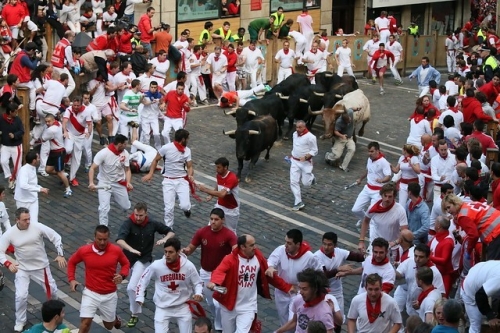
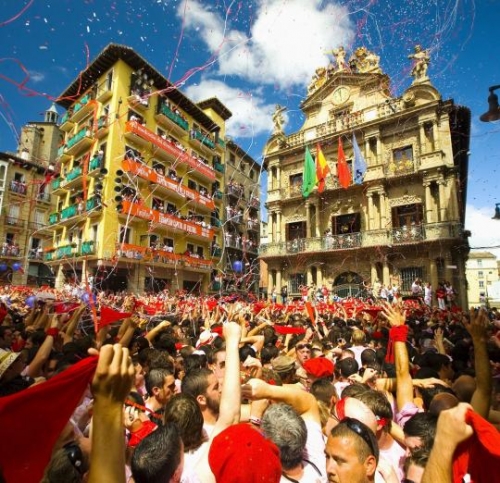

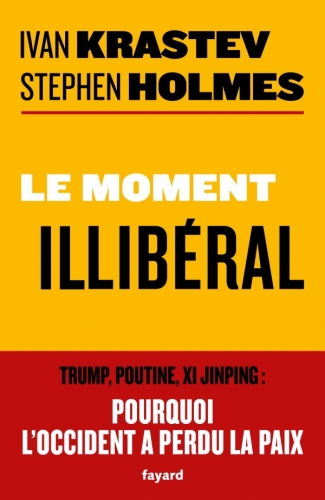
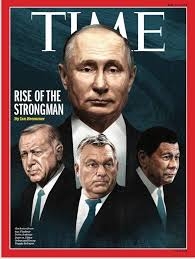 Nos auteurs pensent que l’illibéralisme qui se caractérise par le phénomène des populismes qui émergent sous différentes modalités est « une marée montante menaçante » prenant la forme de l’anarchie illibérale et antidémocratique. Ils ne conçoivent pas que les populismes puissent au contraire être l’expression d’une attente de démocratie, cette démocratie depuis trop longtemps confisquée par les élites libérales mondiales et leur soft power pernicieux. Le plafond de verre de leur analyse du populisme vu sous l’angle réducteur du danger constitue la limite principale de l’ouvrage.
Nos auteurs pensent que l’illibéralisme qui se caractérise par le phénomène des populismes qui émergent sous différentes modalités est « une marée montante menaçante » prenant la forme de l’anarchie illibérale et antidémocratique. Ils ne conçoivent pas que les populismes puissent au contraire être l’expression d’une attente de démocratie, cette démocratie depuis trop longtemps confisquée par les élites libérales mondiales et leur soft power pernicieux. Le plafond de verre de leur analyse du populisme vu sous l’angle réducteur du danger constitue la limite principale de l’ouvrage.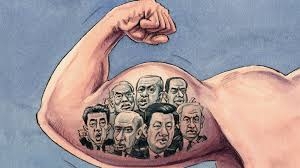

 Review:
Review: Salazar had written on various relatively obscure subjects before achieving fame with the 2015 publication of his reports on ISIS, Paroles Armées (Armed Words). His specialist field of study is rhetoric: how the power and associative imagery of words can be used as a tool in appropriating or resisting power. Rhetoric as a legitimate democratic tool recalls the sophists who marketed their skills in Ancient Athens to ambitious politicians and were lambasted for so doing by Socrates. Salazar seems interested in words less as tools to discover the truth than as tools in a struggle to gain ascendancy.
Salazar had written on various relatively obscure subjects before achieving fame with the 2015 publication of his reports on ISIS, Paroles Armées (Armed Words). His specialist field of study is rhetoric: how the power and associative imagery of words can be used as a tool in appropriating or resisting power. Rhetoric as a legitimate democratic tool recalls the sophists who marketed their skills in Ancient Athens to ambitious politicians and were lambasted for so doing by Socrates. Salazar seems interested in words less as tools to discover the truth than as tools in a struggle to gain ascendancy.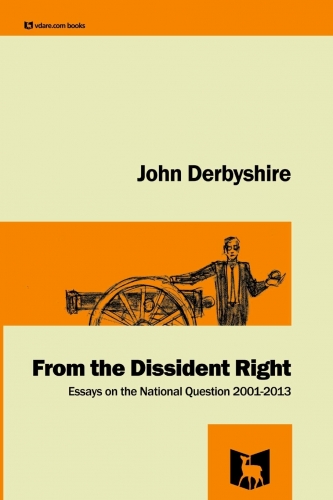 From this alone the reader can see we are far from the earnestness of the usual “investigative reporter.” There is a lightness about this inquiry, a certain half-suppressed amusement which gives a very great advantage and a very great drawback to the study.
From this alone the reader can see we are far from the earnestness of the usual “investigative reporter.” There is a lightness about this inquiry, a certain half-suppressed amusement which gives a very great advantage and a very great drawback to the study. Here is an example of Salazar’s showmanship approach. This is how the chapter entitled “A Cosmopolitan Croatian” begins:
Here is an example of Salazar’s showmanship approach. This is how the chapter entitled “A Cosmopolitan Croatian” begins: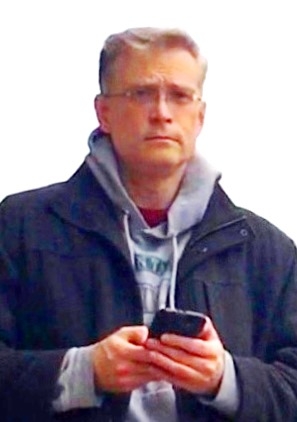 A chapter with more substance than many is “A Global White Nationalist” (English in the original), Salazar’s talk with the editor of Counter-Currents, Greg Johnson. Johnson’s clear aims are outlined. A question and answer session ensues on page 183 which reminded me of a Roman Catholic catechism recital.
A chapter with more substance than many is “A Global White Nationalist” (English in the original), Salazar’s talk with the editor of Counter-Currents, Greg Johnson. Johnson’s clear aims are outlined. A question and answer session ensues on page 183 which reminded me of a Roman Catholic catechism recital.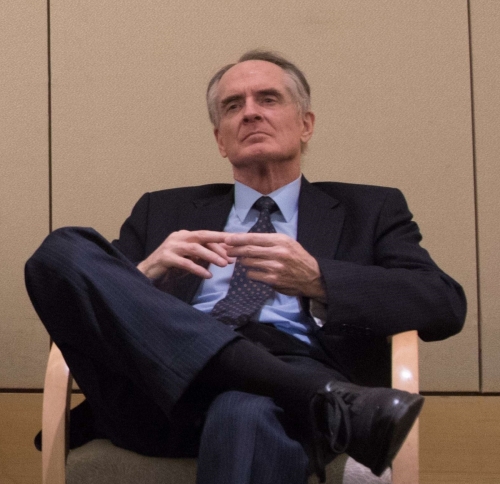

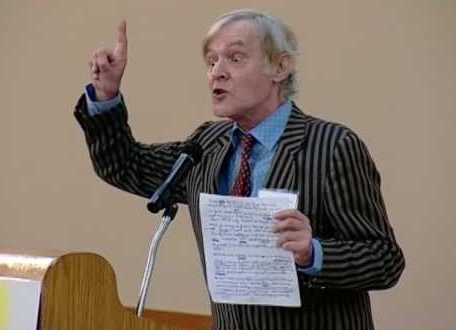
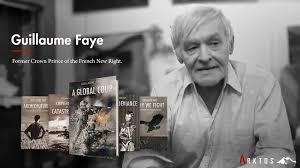
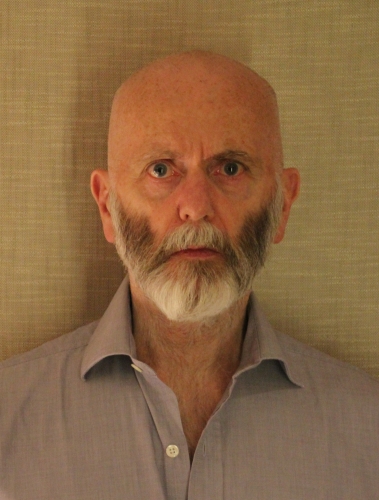
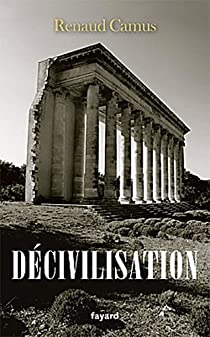 Camus’ definition of race is original: cultural apprenticeship plus natural reproduction equals race. This perhaps Evolian notion of race runs counter to the biological rationalist understanding of most North Americans. Salazar visits Camus, a Baron de Charlus character, in his Medieval castle tower in the Gers in rural France. He passes a Peugeot dealership in the middle of the countryside on his way to Camus and enigmatically states that “it should not be.” (p. 244). Salazar is not making a moral judgment here. He means the machine is not appropriate to this setting. Some might argue to the contrary: bringing small industry home to the nation and away from the big cities is too little, too late; it is what would have prevented the land drain that transformed France in the 1950s, 60s, and 70s. Then the question: How should and could regional identity work? Would home industry prove more a blessing or a bane? What of Trump’s insistence on prioritizing home industries in contrast with the EU’s extreme globalism? Salazar has nothing to say on this and presumably does not encourage Camus to say anything about it. Again, we have a debate that wasn’t. Salazar makes it clear that the interview with Camus was a disappointment, albeit the two part on friendly terms. Salazar dismissively asks himself rhetorically how many thinkers of the alt-right have read the book so praised by Camus as a key to understanding the true meaning of racial and cultural replacement, La Grande Peur des bien-pensants (The Great Fear of right-thinking people) by Georges Bernanos? (p. 252) Nevertheless he concedes, seemingly contradicting himself, and citing Barthes, that Camus is right about the evocative power of words:
Camus’ definition of race is original: cultural apprenticeship plus natural reproduction equals race. This perhaps Evolian notion of race runs counter to the biological rationalist understanding of most North Americans. Salazar visits Camus, a Baron de Charlus character, in his Medieval castle tower in the Gers in rural France. He passes a Peugeot dealership in the middle of the countryside on his way to Camus and enigmatically states that “it should not be.” (p. 244). Salazar is not making a moral judgment here. He means the machine is not appropriate to this setting. Some might argue to the contrary: bringing small industry home to the nation and away from the big cities is too little, too late; it is what would have prevented the land drain that transformed France in the 1950s, 60s, and 70s. Then the question: How should and could regional identity work? Would home industry prove more a blessing or a bane? What of Trump’s insistence on prioritizing home industries in contrast with the EU’s extreme globalism? Salazar has nothing to say on this and presumably does not encourage Camus to say anything about it. Again, we have a debate that wasn’t. Salazar makes it clear that the interview with Camus was a disappointment, albeit the two part on friendly terms. Salazar dismissively asks himself rhetorically how many thinkers of the alt-right have read the book so praised by Camus as a key to understanding the true meaning of racial and cultural replacement, La Grande Peur des bien-pensants (The Great Fear of right-thinking people) by Georges Bernanos? (p. 252) Nevertheless he concedes, seemingly contradicting himself, and citing Barthes, that Camus is right about the evocative power of words:
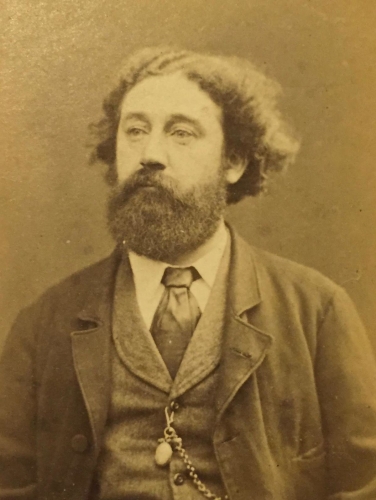
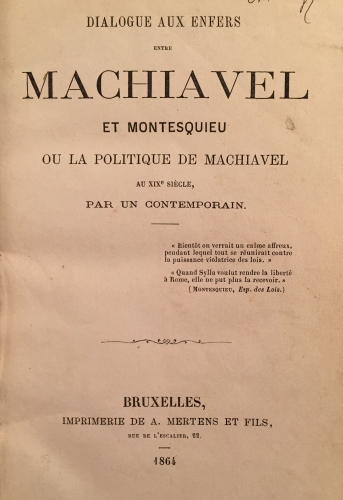
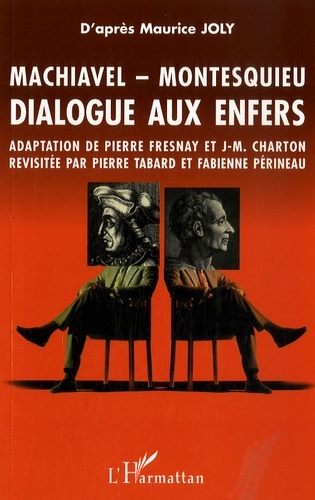 Machiavel conseille un peu de chaos, un peu de dissonance et d’incohérences pour contrôler la masse :
Machiavel conseille un peu de chaos, un peu de dissonance et d’incohérences pour contrôler la masse :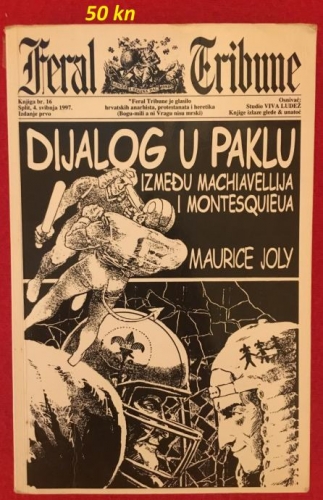 Les réformes ? Mais l’Etat adore réformer la France, l’Europe, le monde, les retraites :
Les réformes ? Mais l’Etat adore réformer la France, l’Europe, le monde, les retraites :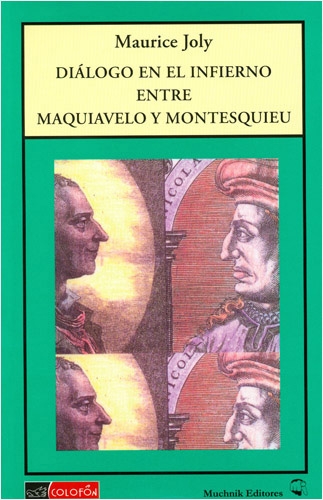 Enfin le peuple maso aime et comprend les coups, le 11 septembre, et tous les Bataclan :
Enfin le peuple maso aime et comprend les coups, le 11 septembre, et tous les Bataclan :

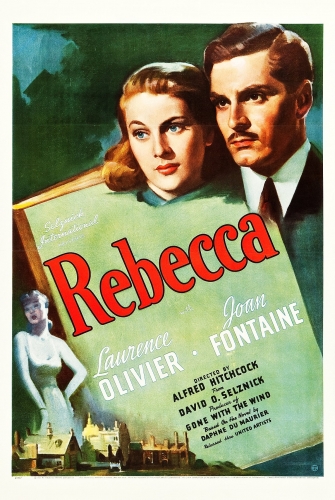 Tu distingues de nombreux type de femmes…
Tu distingues de nombreux type de femmes… Tu évoques beaucoup les décors dans ton essai…
Tu évoques beaucoup les décors dans ton essai…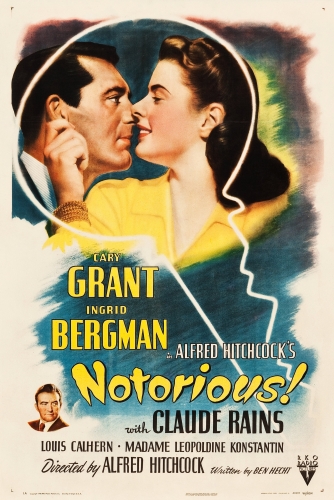 Et il y a Shirley McLaine dans Harry…
Et il y a Shirley McLaine dans Harry…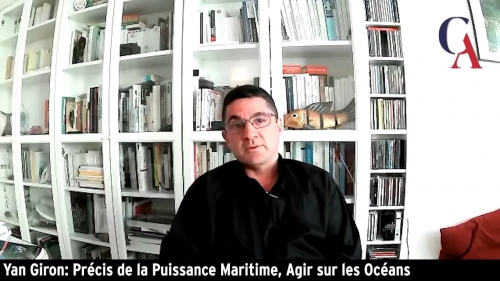

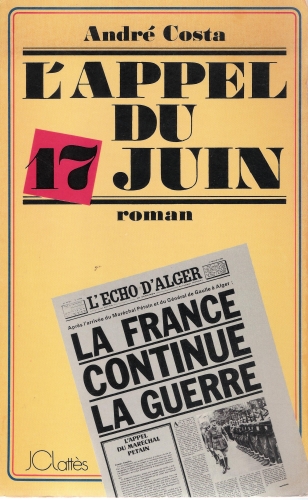
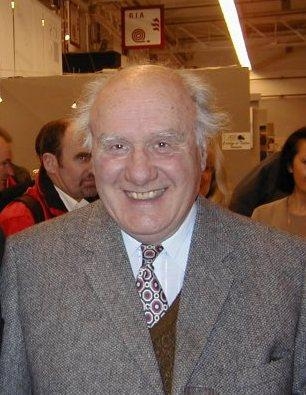 Navigateur, pilote automobile et historien à ses heures perdues, André Costa (1926 – 2002) a dirigé L’Auto-Journal, le fleuron du groupe de presse de Robert Hersant entre 1950 et 1991. Sa passion pour les sports mécaniques en fait un journaliste féru d’essais des nouveaux modèles automobile. Souvent présent aux courses motorisées en circuit fermé ou en rallye, il écrit des ouvrages spécialisés (Les roues libres). Il se distingue aussi par L’appel du 17 juin, un brillant récit uchronique.
Navigateur, pilote automobile et historien à ses heures perdues, André Costa (1926 – 2002) a dirigé L’Auto-Journal, le fleuron du groupe de presse de Robert Hersant entre 1950 et 1991. Sa passion pour les sports mécaniques en fait un journaliste féru d’essais des nouveaux modèles automobile. Souvent présent aux courses motorisées en circuit fermé ou en rallye, il écrit des ouvrages spécialisés (Les roues libres). Il se distingue aussi par L’appel du 17 juin, un brillant récit uchronique.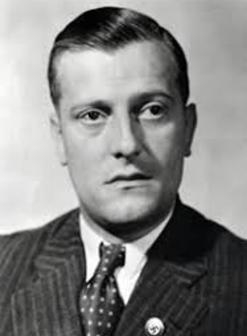 Berlin nomme comme Gauleiter de la France occupée Otto Abetz. Afin de contrer la légitimité du gouvernement français d’Alger, il incite Pierre Laval à devenir le chef d’un gouvernement embryonnaire avec pour seuls ministres Marcel Déat à l’Intérieur et Jacques Doriot à la Défense nationale. L’auteur s’inscrit ici dans la convenance historique. On peut très bien imaginer que les militants du « Grand Jacques » suivent l’appel du Maréchal et s’engagent dans une féroce guérilla. Celle-ci n’est pas le fait comme en 1870 de francs-tireurs, mais de soldats français restés en métropole et regroupés en « Unités spéciales ». La n° 1 est directement dirigée par un prisonnier de guerre évadé et ancien corps-franc en 1939 – 1940 : Joseph Darnand. Celui-ci monte de multiples actions meurtrières contre les occupants allemands. André Costa tient probablement à rappeler ce qu’écrivait Georges Bernanos : « S’il y avait eu plus de Darnand en 1940, il n’y aurait pas eu de miliciens en 1944. » Exempt donc de toute interprétation « paxtonite », L’appel du 17 juin décrit les premières persécutions de la population juive dans tout le pays dès l’été 1940.
Berlin nomme comme Gauleiter de la France occupée Otto Abetz. Afin de contrer la légitimité du gouvernement français d’Alger, il incite Pierre Laval à devenir le chef d’un gouvernement embryonnaire avec pour seuls ministres Marcel Déat à l’Intérieur et Jacques Doriot à la Défense nationale. L’auteur s’inscrit ici dans la convenance historique. On peut très bien imaginer que les militants du « Grand Jacques » suivent l’appel du Maréchal et s’engagent dans une féroce guérilla. Celle-ci n’est pas le fait comme en 1870 de francs-tireurs, mais de soldats français restés en métropole et regroupés en « Unités spéciales ». La n° 1 est directement dirigée par un prisonnier de guerre évadé et ancien corps-franc en 1939 – 1940 : Joseph Darnand. Celui-ci monte de multiples actions meurtrières contre les occupants allemands. André Costa tient probablement à rappeler ce qu’écrivait Georges Bernanos : « S’il y avait eu plus de Darnand en 1940, il n’y aurait pas eu de miliciens en 1944. » Exempt donc de toute interprétation « paxtonite », L’appel du 17 juin décrit les premières persécutions de la population juive dans tout le pays dès l’été 1940. Il est probable qu’André Costa ait lu la trilogie des Waffen SS français de « Maît’Jean ». Rédacteur en chef de L’Auto-Journal, il devait de temps en temps rencontrer son grand patron, Robert Hersant, ancien du Jeune Front du Parti français national-collectiviste de Pierre Clémenti. Ce passionné de l’automobile côtoyait par ailleurs Jean-Marie Balestre, président de la Fédération internationale du sport automobile (FISA) entre 1978 et 1991, qui, dans sa jeunesse, avait été un volontaire français de la Waffen SS tout en restant proche des milieux de la Résistance intérieure. Affecté au journal SS français Devenir, il rédigeait sous l’autorité de… Saint-Loup. Il est envisageable qu’après avoir épuisé leur conversation favorite consacrée aux voitures, André Costa et Jean-Marie Balestre en viennent à parler de leur engagement militaire respectif passé.
Il est probable qu’André Costa ait lu la trilogie des Waffen SS français de « Maît’Jean ». Rédacteur en chef de L’Auto-Journal, il devait de temps en temps rencontrer son grand patron, Robert Hersant, ancien du Jeune Front du Parti français national-collectiviste de Pierre Clémenti. Ce passionné de l’automobile côtoyait par ailleurs Jean-Marie Balestre, président de la Fédération internationale du sport automobile (FISA) entre 1978 et 1991, qui, dans sa jeunesse, avait été un volontaire français de la Waffen SS tout en restant proche des milieux de la Résistance intérieure. Affecté au journal SS français Devenir, il rédigeait sous l’autorité de… Saint-Loup. Il est envisageable qu’après avoir épuisé leur conversation favorite consacrée aux voitures, André Costa et Jean-Marie Balestre en viennent à parler de leur engagement militaire respectif passé.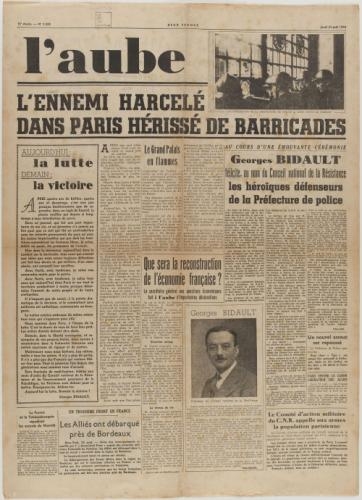 Élu chef de l’État, le Maréchal nomme le général de Gaulle Premier ministre. Ce prisme institutionnel « gaullien » dénote dans l’économie générale du récit. L’auteur ne se rapporte jamais à la loi Tréveneuc du 23 février 1872 qui, en cas d’empêchement du Parlement, permet à tous les conseils généraux disponibles de choisir en leur sein deux délégués qui forment alors une assemblée nationale provisoire. Cherche-t-il aussi à réconcilier à travers ce récit fictif gaullistes et pétainistes ? Lors d’une nouvelle discussion entre les deux plus grands personnages français du XXe siècle, il fait dire à Charles de Gaulle les conséquences qu’aurait eues un éventuel armistice :
Élu chef de l’État, le Maréchal nomme le général de Gaulle Premier ministre. Ce prisme institutionnel « gaullien » dénote dans l’économie générale du récit. L’auteur ne se rapporte jamais à la loi Tréveneuc du 23 février 1872 qui, en cas d’empêchement du Parlement, permet à tous les conseils généraux disponibles de choisir en leur sein deux délégués qui forment alors une assemblée nationale provisoire. Cherche-t-il aussi à réconcilier à travers ce récit fictif gaullistes et pétainistes ? Lors d’une nouvelle discussion entre les deux plus grands personnages français du XXe siècle, il fait dire à Charles de Gaulle les conséquences qu’aurait eues un éventuel armistice :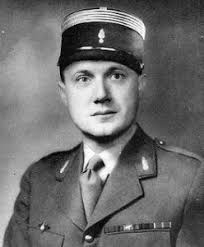 André Costa se plaît ici à reprendre la célèbre formule du Colonel Rémy (alias Gilbert Renault). Ce résistant royaliste de la première heure, plus tard Compagnon de la Libération, fondateur du réseau résistant « Confrérie Notre-Dame », principal orateur du mouvement gaulliste d’opposition RPF (Rassemblement du peuple français), soutient en 1950 dans l’hebdomadaire Carrefour la « théorie des deux cordes », soit un accord tacite entre l’« épée » de Gaulle et le « bouclier » Pétain. Une version aujourd’hui hérétique dans l’université putréfiée hexagonale, mais qui reste largement valable, n’en déplaise aux sycophantes en place.
André Costa se plaît ici à reprendre la célèbre formule du Colonel Rémy (alias Gilbert Renault). Ce résistant royaliste de la première heure, plus tard Compagnon de la Libération, fondateur du réseau résistant « Confrérie Notre-Dame », principal orateur du mouvement gaulliste d’opposition RPF (Rassemblement du peuple français), soutient en 1950 dans l’hebdomadaire Carrefour la « théorie des deux cordes », soit un accord tacite entre l’« épée » de Gaulle et le « bouclier » Pétain. Une version aujourd’hui hérétique dans l’université putréfiée hexagonale, mais qui reste largement valable, n’en déplaise aux sycophantes en place. Sans le savoir, André Costa anticipe ici la thèse, contestée bien évidemment par les historiens de cour, de Victor Suvorov dans Le brise-glace (3). « Hitler croyait l’invasion inévitable, mais il ne pensait pas qu’elle serait imminente. Les troupes allemandes étant employées à des opérations secondaires, l’opération “ Barbarossa ” fut même reportée à plusieurs reprises. Elle commença enfin le 22 juin 1941. Hitler ne se rendit manifestement pas compte à quel point il avait eu de la chance. S’il avait repoussé son plan une nouvelle fois, par exemple au 22 juillet, il aurait très certainement fini la guerre bien avant 1945. Nombre d’indices tendent à prouver que la date fixée par Staline pour l’opération “ Orage ” était le 6 juillet 1941 (4). » Dans le contexte géopolitique propre à L’appel du 17 juin, à la vue des défaites successives de l’Axe, Staline peut fort bien avancer au mois de février son plan de conquête de l’Europe. L’auteur ne dit rien sur l’éventuel déclenchement parallèle, coordonné et simultané par les appareils clandestins communistes de grandes grèves générales et d’actes révolutionnaires subversifs dans l’Europe entière ainsi qu’en Afrique du Nord. Joachim F. Weber rappelle pour sa part dans la revue jeune-conservatrice
Sans le savoir, André Costa anticipe ici la thèse, contestée bien évidemment par les historiens de cour, de Victor Suvorov dans Le brise-glace (3). « Hitler croyait l’invasion inévitable, mais il ne pensait pas qu’elle serait imminente. Les troupes allemandes étant employées à des opérations secondaires, l’opération “ Barbarossa ” fut même reportée à plusieurs reprises. Elle commença enfin le 22 juin 1941. Hitler ne se rendit manifestement pas compte à quel point il avait eu de la chance. S’il avait repoussé son plan une nouvelle fois, par exemple au 22 juillet, il aurait très certainement fini la guerre bien avant 1945. Nombre d’indices tendent à prouver que la date fixée par Staline pour l’opération “ Orage ” était le 6 juillet 1941 (4). » Dans le contexte géopolitique propre à L’appel du 17 juin, à la vue des défaites successives de l’Axe, Staline peut fort bien avancer au mois de février son plan de conquête de l’Europe. L’auteur ne dit rien sur l’éventuel déclenchement parallèle, coordonné et simultané par les appareils clandestins communistes de grandes grèves générales et d’actes révolutionnaires subversifs dans l’Europe entière ainsi qu’en Afrique du Nord. Joachim F. Weber rappelle pour sa part dans la revue jeune-conservatrice 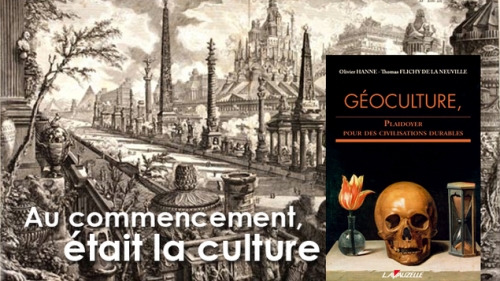

 En réalité, ce primat de l’économie se révèle une illusion d’optique. Il est d’ailleurs contesté par les mouvements altermondialistes et écologiques, les chiffres de l’abstention électorale et le retour de la rhétorique patriotique. Partout, des appels à une autre « gouvernance » se font entendre. Un nouvel avenir est annoncé, celui du renversement des échanges de marchandises au profit des solidarités sociales. Mais, paradoxalement, la contestation altermondialiste ne remet pas fondamentalement en cause le primat de l’économie : la décroissance, l’inversion des profits et la taxation des bénéfices financiers ne servent qu’à promouvoir une nouvelle révolution matérielle mondiale. Bref, même chez ceux qui souhaitent abolir le capitalisme marchand, tout ne reste qu’économique. Or les données chiffrées ne nous offrent qu’une idée imparfaite des risques à venir. De plus, ces indicateurs complexes se manipulent aisément. La réduction du monde au simple jeu des forces économiques fait finalement obstacle à l’intelligence car elle passe deux dimensions essentielles sous silence : l’affirmation des cultures et la volonté de puissance.
En réalité, ce primat de l’économie se révèle une illusion d’optique. Il est d’ailleurs contesté par les mouvements altermondialistes et écologiques, les chiffres de l’abstention électorale et le retour de la rhétorique patriotique. Partout, des appels à une autre « gouvernance » se font entendre. Un nouvel avenir est annoncé, celui du renversement des échanges de marchandises au profit des solidarités sociales. Mais, paradoxalement, la contestation altermondialiste ne remet pas fondamentalement en cause le primat de l’économie : la décroissance, l’inversion des profits et la taxation des bénéfices financiers ne servent qu’à promouvoir une nouvelle révolution matérielle mondiale. Bref, même chez ceux qui souhaitent abolir le capitalisme marchand, tout ne reste qu’économique. Or les données chiffrées ne nous offrent qu’une idée imparfaite des risques à venir. De plus, ces indicateurs complexes se manipulent aisément. La réduction du monde au simple jeu des forces économiques fait finalement obstacle à l’intelligence car elle passe deux dimensions essentielles sous silence : l’affirmation des cultures et la volonté de puissance.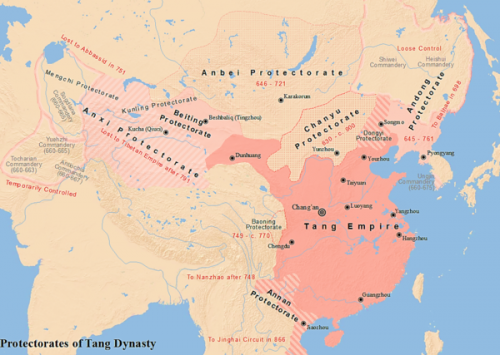
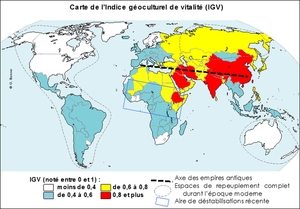
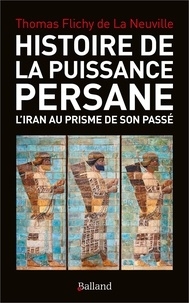 Or ce qui est vrai pour les empires ne l’est pas moins pour les entreprises, dont la durée de vie et la santé financière sont menacées par leur croyance au mythe techniciste. Ainsi en est-il au dernier stade pour les familles qui se perpétuent dans la longue durée lorsqu’elles adhèrent à des valeurs spirituelles forçant leurs membres à se dépasser ou à l’inverse s’atomisent en une multitude d’individus rivaux, attirés, tels des lucioles, vers le profit qui les calcinera. Les nations durables s’enracinent par conséquent dans des cultures qui peuvent être d’une variété inouïe, mais qui pour perpétuer la vie, doivent pouvoir se renouveler sans pour autant se renier.
Or ce qui est vrai pour les empires ne l’est pas moins pour les entreprises, dont la durée de vie et la santé financière sont menacées par leur croyance au mythe techniciste. Ainsi en est-il au dernier stade pour les familles qui se perpétuent dans la longue durée lorsqu’elles adhèrent à des valeurs spirituelles forçant leurs membres à se dépasser ou à l’inverse s’atomisent en une multitude d’individus rivaux, attirés, tels des lucioles, vers le profit qui les calcinera. Les nations durables s’enracinent par conséquent dans des cultures qui peuvent être d’une variété inouïe, mais qui pour perpétuer la vie, doivent pouvoir se renouveler sans pour autant se renier.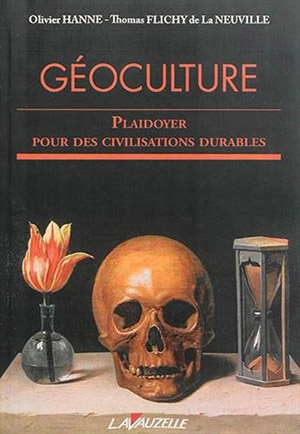
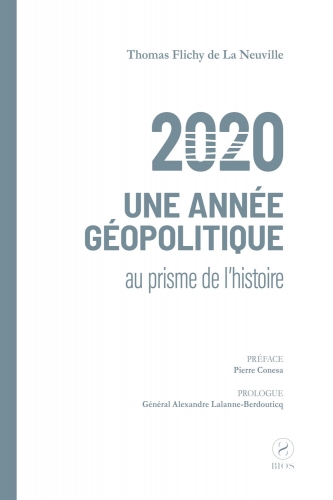

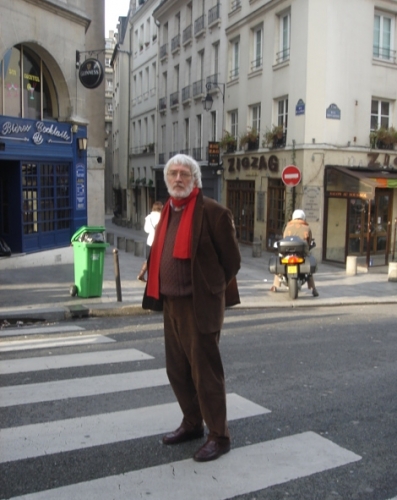 Fort peu de lecteurs auront la chance de tenir entre leurs mains la belle quadruple étude de Jacques Dewitte, Le pouvoir de la langue et la liberté de l'esprit, sous-titré Essai sur la résistance au langage totalitaire, que l'éditeur, Michalon, n'a pas jugé utile de rééditer depuis 2007. Il n'est donc pas étonnant que cet ouvrage atteigne désormais des sommes coquettes sur les différents sites de librairies en ligne. Au moins, ce lecteur curieux n'aura pas le regard épouvanté par la première de couverture, très laide illustration imbriquant un labyrinthe et un goéland toutes ailes déployées qui, je le suppose, dans l'esprit du crétin responsable d'un tel saccage inesthétique, doit parfaitement convenir au mouvement de balancier que l'auteur imprime à sa problématique : d'un côté le langage à visée totalitaire, englobant tout, prétendant du moins tout englober, de l'autre la réalité qu'il tente à n'importe quel prix de gauchir, de grimer, jusqu'à ce qu'elle corresponde à ses mots et slogans pourris. Il ne s'agit cependant point, en analysant le langage vérolé, de s'exonérer du langage lui-même, car Jacques Dewitte a raison de nous rappeler que, sans la médiation complexe qu'imposent les mots, la réalité n'est rien. Dès lors, il faut parier qu'il n'y a «dépassement de l'emprise totalitaire que par un mouvement double où l'on retrouve une forme de circularité», à savoir «un mouvement vers les choses», mais aussi la «mise en œuvre des mots», et, à cette fin, la «remise en route de la parole lorsqu'elle s'est enlisée, mais encore, compte tenu de sa fréquente détérioration», la «remise en état de la langue» (1). Nous verrons qu'il n'est pas si facile que cela, en soignant le langage contaminé par le bacille du slogan, de la langue de bois, de la fausse langue à visées hégémoniques, de retrouver le monde : le langage totalitaire, le langage maléfique, même, que Jacques Dewitte évoque hélas trop peu, ont pour particularité, en contaminant celles et ceux qui l'emploient, de saper les fondements de notre confiance dans le monde.
Fort peu de lecteurs auront la chance de tenir entre leurs mains la belle quadruple étude de Jacques Dewitte, Le pouvoir de la langue et la liberté de l'esprit, sous-titré Essai sur la résistance au langage totalitaire, que l'éditeur, Michalon, n'a pas jugé utile de rééditer depuis 2007. Il n'est donc pas étonnant que cet ouvrage atteigne désormais des sommes coquettes sur les différents sites de librairies en ligne. Au moins, ce lecteur curieux n'aura pas le regard épouvanté par la première de couverture, très laide illustration imbriquant un labyrinthe et un goéland toutes ailes déployées qui, je le suppose, dans l'esprit du crétin responsable d'un tel saccage inesthétique, doit parfaitement convenir au mouvement de balancier que l'auteur imprime à sa problématique : d'un côté le langage à visée totalitaire, englobant tout, prétendant du moins tout englober, de l'autre la réalité qu'il tente à n'importe quel prix de gauchir, de grimer, jusqu'à ce qu'elle corresponde à ses mots et slogans pourris. Il ne s'agit cependant point, en analysant le langage vérolé, de s'exonérer du langage lui-même, car Jacques Dewitte a raison de nous rappeler que, sans la médiation complexe qu'imposent les mots, la réalité n'est rien. Dès lors, il faut parier qu'il n'y a «dépassement de l'emprise totalitaire que par un mouvement double où l'on retrouve une forme de circularité», à savoir «un mouvement vers les choses», mais aussi la «mise en œuvre des mots», et, à cette fin, la «remise en route de la parole lorsqu'elle s'est enlisée, mais encore, compte tenu de sa fréquente détérioration», la «remise en état de la langue» (1). Nous verrons qu'il n'est pas si facile que cela, en soignant le langage contaminé par le bacille du slogan, de la langue de bois, de la fausse langue à visées hégémoniques, de retrouver le monde : le langage totalitaire, le langage maléfique, même, que Jacques Dewitte évoque hélas trop peu, ont pour particularité, en contaminant celles et ceux qui l'emploient, de saper les fondements de notre confiance dans le monde.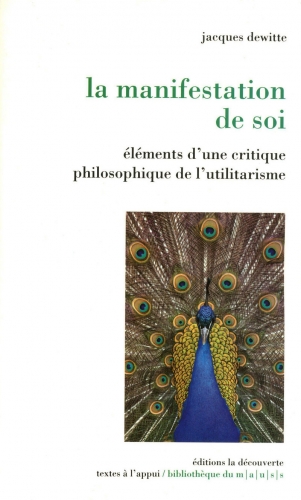 C'est dire qu'il ne faut pas seulement parler de «bouclage absolu» (2) à propos de la fable langagière génialement dépeinte par George Orwell dans 1984, mais, aussi et voilà qui ne laisse pas d'être inquiétant, pour notre si irénique et consensuelle société dont nous ne manquerions pas de choquer les commis si nous leur prouvions qu'ils ne tolèrent rien de ce qui serait susceptible de heurter leurs petites convictions normativement castrées. Et force est alors de constater que le langage totalitaire n'est pas celui, d'acier ou d'airain, mis en circulation par les seuls régimes autoritaires, puisque nous pourrions à bon droit prétendre que la novlangue (3) démocratique, comme n'importe lequel de ces langages cherchant à triompher de ses concurrents,
C'est dire qu'il ne faut pas seulement parler de «bouclage absolu» (2) à propos de la fable langagière génialement dépeinte par George Orwell dans 1984, mais, aussi et voilà qui ne laisse pas d'être inquiétant, pour notre si irénique et consensuelle société dont nous ne manquerions pas de choquer les commis si nous leur prouvions qu'ils ne tolèrent rien de ce qui serait susceptible de heurter leurs petites convictions normativement castrées. Et force est alors de constater que le langage totalitaire n'est pas celui, d'acier ou d'airain, mis en circulation par les seuls régimes autoritaires, puisque nous pourrions à bon droit prétendre que la novlangue (3) démocratique, comme n'importe lequel de ces langages cherchant à triompher de ses concurrents, 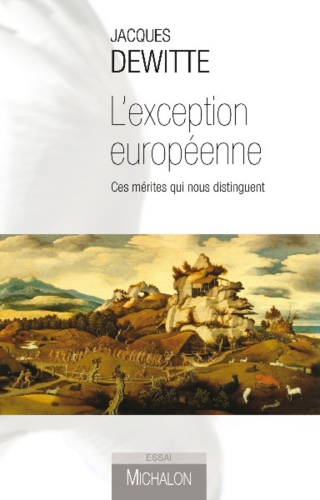 Jacques Dewitte, hélas, ne poursuit pas plus avant son exploration de ces contrées interdites, ne se dirige pas, hardiment, vers le Kurtz de Conrad et son décalque steinerien comme j'ai pu tenter de le faire dans
Jacques Dewitte, hélas, ne poursuit pas plus avant son exploration de ces contrées interdites, ne se dirige pas, hardiment, vers le Kurtz de Conrad et son décalque steinerien comme j'ai pu tenter de le faire dans 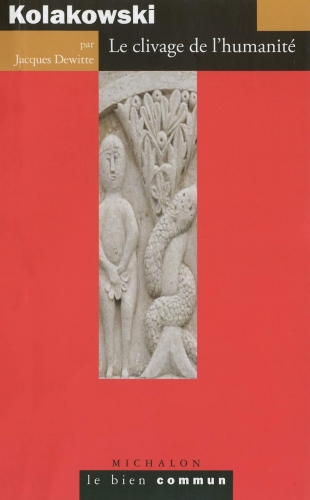 Cette confiance dans le langage sortira même renforcée de «l'expérience totalitaire» et de «la crise contemporaine» (p. 235) sur laquelle, hélas, Jacques Dewitte ne s'attarde guère (6), préférant insister, je l'ai dit, sur des remèdes qui sont à la portée de tout un chacun mais me paraissent pourtant absolument ridicules face au déferlement des langages viciés, dont la novlangue managériale, que Baptiste Rappin analyse comme le bras armé de la Machine, est le masque le plus grimaçant et redoutable. S'il est certes absolument évident à mes yeux que «l'existence d'un ordre stable du monde et de la langue (7) est une condition de la liberté (et pas seulement de la vérité), et qu'une liberté devenue un arbitraire institutionnalisé se révèle le pire ennemi de la vraie liberté individuelle» (p. 252), je suis bien davantage sceptique sur la belle confiance dont témoigne Jacques Dewitte évoquant «la fin du cauchemar engendré par les utopies», censé inaugurer «le retour à une vie humaine finie et imparfaite», ainsi qu'un «retour au champ où la parole rencontre la réalité, où une relation mutuelle peut s'établir entre elles», un «retour à une situation où la pensée qui se cherche doit aussi chercher et choisir ses mots, c'est-à-dire effectuer un va-et-vient entre la chose-à-dire et les ressources de la langue héritée, sans être d'emblée captivée par tel vocable devenu quasi compulsif».
Cette confiance dans le langage sortira même renforcée de «l'expérience totalitaire» et de «la crise contemporaine» (p. 235) sur laquelle, hélas, Jacques Dewitte ne s'attarde guère (6), préférant insister, je l'ai dit, sur des remèdes qui sont à la portée de tout un chacun mais me paraissent pourtant absolument ridicules face au déferlement des langages viciés, dont la novlangue managériale, que Baptiste Rappin analyse comme le bras armé de la Machine, est le masque le plus grimaçant et redoutable. S'il est certes absolument évident à mes yeux que «l'existence d'un ordre stable du monde et de la langue (7) est une condition de la liberté (et pas seulement de la vérité), et qu'une liberté devenue un arbitraire institutionnalisé se révèle le pire ennemi de la vraie liberté individuelle» (p. 252), je suis bien davantage sceptique sur la belle confiance dont témoigne Jacques Dewitte évoquant «la fin du cauchemar engendré par les utopies», censé inaugurer «le retour à une vie humaine finie et imparfaite», ainsi qu'un «retour au champ où la parole rencontre la réalité, où une relation mutuelle peut s'établir entre elles», un «retour à une situation où la pensée qui se cherche doit aussi chercher et choisir ses mots, c'est-à-dire effectuer un va-et-vient entre la chose-à-dire et les ressources de la langue héritée, sans être d'emblée captivée par tel vocable devenu quasi compulsif». 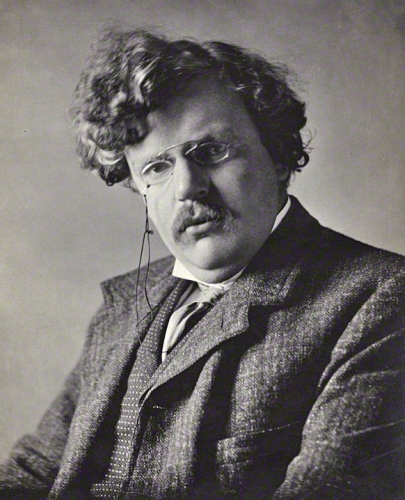
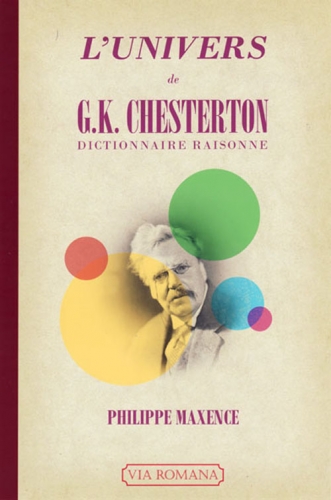

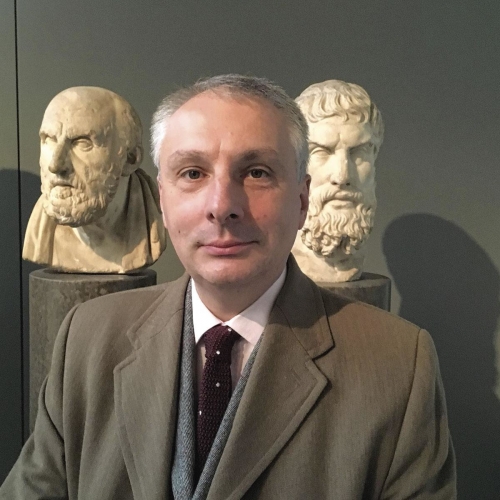




 Le tigre, au sens qu'envisage Evola, c'est la force dissolvante et destructive qui entre en jeu vers la fin de tout cycle cosmique. En face d'elle, dit l'auteur, il serait vain de maintenir les formes et la structure d'une civilisation désormais révolue ; la seule chose qu'on peut faire, c'est de porter la négation au-delà de son point mort et de la faire aboutir, par une transposition consciente, non pas au néant mais à « un nouvel espace libre, qui sera peut-être la prémisse d'une nouvelle action formatrice ».
Le tigre, au sens qu'envisage Evola, c'est la force dissolvante et destructive qui entre en jeu vers la fin de tout cycle cosmique. En face d'elle, dit l'auteur, il serait vain de maintenir les formes et la structure d'une civilisation désormais révolue ; la seule chose qu'on peut faire, c'est de porter la négation au-delà de son point mort et de la faire aboutir, par une transposition consciente, non pas au néant mais à « un nouvel espace libre, qui sera peut-être la prémisse d'une nouvelle action formatrice ».


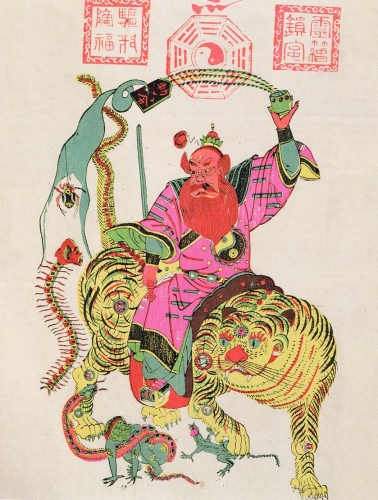
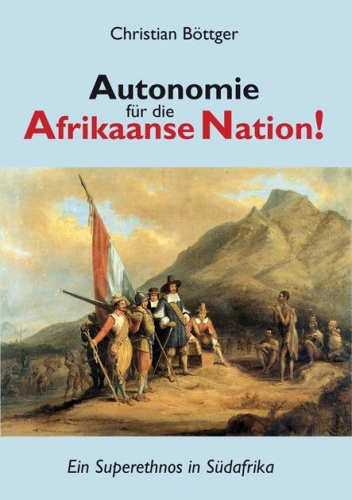
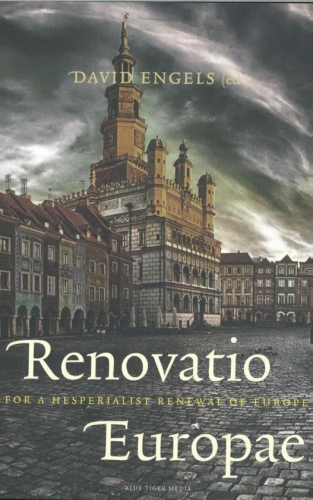
 Renovatio Europæ est un recueil collectif issu d’« un projet de recherche basé à l’Instytut Zachodni à Poznan (Pologne) (p. 9) ». David Engels ne cache pas vouloir susciter « un conservatisme révolutionnaire (p. 225) » et, de ce fait, concevoir « une idéologie politique sceptique face à l’Union européenne, mais favorable à l’idée européenne (p. 22) ». Il entend « introduire, pour désigner un amour patriotique pour une Europe unifiée, basée non pas seulement sur des valeurs universalistes, mais aussi conservatrices, le terme d’« hespérialisme » – terme dérivé de l’appellation grecque de l’extrême Occident du monde connu d’antan, et formant le complément, voire l’opposition au terme d’« européisme », qui désigne habituellement un soutien non critique de l’Union européenne actuelle et de son idéologie dominante : la “ bienpensance ” politiquement correcte (p. 16) ». Ainsi considère-t-il que « l’hespérialisme est uniquement conservateur dans la mesure où il apprécie les valeurs du passé; mais en fait, on pourrait le décrire, tout aussi légitimement, comme orienté résolument vers le futur, même comme révolutionnaire (p. 226) ».
Renovatio Europæ est un recueil collectif issu d’« un projet de recherche basé à l’Instytut Zachodni à Poznan (Pologne) (p. 9) ». David Engels ne cache pas vouloir susciter « un conservatisme révolutionnaire (p. 225) » et, de ce fait, concevoir « une idéologie politique sceptique face à l’Union européenne, mais favorable à l’idée européenne (p. 22) ». Il entend « introduire, pour désigner un amour patriotique pour une Europe unifiée, basée non pas seulement sur des valeurs universalistes, mais aussi conservatrices, le terme d’« hespérialisme » – terme dérivé de l’appellation grecque de l’extrême Occident du monde connu d’antan, et formant le complément, voire l’opposition au terme d’« européisme », qui désigne habituellement un soutien non critique de l’Union européenne actuelle et de son idéologie dominante : la “ bienpensance ” politiquement correcte (p. 16) ». Ainsi considère-t-il que « l’hespérialisme est uniquement conservateur dans la mesure où il apprécie les valeurs du passé; mais en fait, on pourrait le décrire, tout aussi légitimement, comme orienté résolument vers le futur, même comme révolutionnaire (p. 226) ».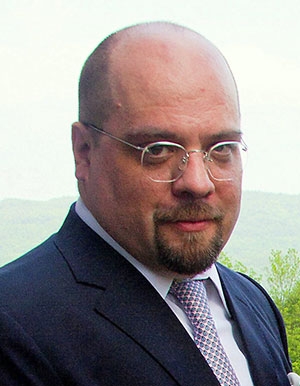 L’Italien Alvino-Mario Fantini souhaite l’apparition d’« une Droite révolutionnaire (p. 165) » dont la tâche principale serait « de reconstruire la civilisation occidentale sous toutes ses formes et de la restaurer afin de lui donner une place proéminente dans notre culture (p. 174) ». S’agit-il de la civilisation occidentale ou bien de la civilisation européenne ? Cet auteur ne définit pas l’Occident qu’il confond avec une hypothétique « Chrétienté du XXIe siècle » qu’il appelle de ses vœux. Rêve-t-il en néo-guelfe à de nouvelles compagnies missionnaires auprès des sociétés européennes si bien qu’après la « délaïcisation » réalisée se manifesterait « la profession visible des anciennes fois par de jeunes hommes arborant kippa et papillotes et par de vieux curés en soutane et béret (p. 175) » ? Et pourquoi pas le contraire ? Quelle place accorder aux communautés historiques musulmanes (Pomaks de Grèce, Bosniaques, musulmans d’Albanie, Gorans, Tatars de Pologne, Turcs de Bulgarie, etc.) ? Serait-il hostile au port du hijab et du tchador ? Ce croyant ne se sent-il pas solidaire des musulmanes exclues des collèges et des lycées laïques français parce qu’elles anticipaient une mesure prophylactique en vigueur en 2020 ? Sa « Chrétienté du XXIe siècle » ressemble beaucoup à l’ordre moral petit-bourgeois du XIXe siècle.
L’Italien Alvino-Mario Fantini souhaite l’apparition d’« une Droite révolutionnaire (p. 165) » dont la tâche principale serait « de reconstruire la civilisation occidentale sous toutes ses formes et de la restaurer afin de lui donner une place proéminente dans notre culture (p. 174) ». S’agit-il de la civilisation occidentale ou bien de la civilisation européenne ? Cet auteur ne définit pas l’Occident qu’il confond avec une hypothétique « Chrétienté du XXIe siècle » qu’il appelle de ses vœux. Rêve-t-il en néo-guelfe à de nouvelles compagnies missionnaires auprès des sociétés européennes si bien qu’après la « délaïcisation » réalisée se manifesterait « la profession visible des anciennes fois par de jeunes hommes arborant kippa et papillotes et par de vieux curés en soutane et béret (p. 175) » ? Et pourquoi pas le contraire ? Quelle place accorder aux communautés historiques musulmanes (Pomaks de Grèce, Bosniaques, musulmans d’Albanie, Gorans, Tatars de Pologne, Turcs de Bulgarie, etc.) ? Serait-il hostile au port du hijab et du tchador ? Ce croyant ne se sent-il pas solidaire des musulmanes exclues des collèges et des lycées laïques français parce qu’elles anticipaient une mesure prophylactique en vigueur en 2020 ? Sa « Chrétienté du XXIe siècle » ressemble beaucoup à l’ordre moral petit-bourgeois du XIXe siècle. 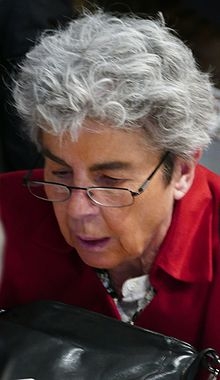 Autre énormité proférée par la « Figariste » de l’ouvrage : « Quand on a colonisé et utilisé des peuples qui désormais parlent français, on est responsable d’eux (p. 89). » Chantal Delsol ne comprend pas que le temps des colonies de grand-papy chanté par Michel Sardou n’existe plus. La Décolonisation est passée par là… C’est avec de tels arguments infantilisants que l’Afrique préfère se victimiser plutôt que de prendre son destin en main. Chantal Delsol n’évoque d’ailleurs pas le pillage organisé des richesses du Continent noir (de l’Asie, de l’Amérique latine et de l’Océanie) par les sociétés occidentales. Son point de vue se rapproche de celui d’Yves de Kerdrel, macroniste militant et ancien responsable du flotteur droitard du cosmopolitisme, Valeurs actuelles. « Au nom du droit de la mer, de l’entraide des marins et surtout du respect de la vie, je demande aux autorités françaises d’accorder à L’Aquarius le droit d’accoster à Marseille. Notre identité et notre civilisation sont menacées par la PMA et non par 58 réfugiés (3). » On pense strictement le contraire d’autant que dans le cadre d’un État vrai, néo–spartiate, la généralisation de la PMA favorisera la natalité autochtone.
Autre énormité proférée par la « Figariste » de l’ouvrage : « Quand on a colonisé et utilisé des peuples qui désormais parlent français, on est responsable d’eux (p. 89). » Chantal Delsol ne comprend pas que le temps des colonies de grand-papy chanté par Michel Sardou n’existe plus. La Décolonisation est passée par là… C’est avec de tels arguments infantilisants que l’Afrique préfère se victimiser plutôt que de prendre son destin en main. Chantal Delsol n’évoque d’ailleurs pas le pillage organisé des richesses du Continent noir (de l’Asie, de l’Amérique latine et de l’Océanie) par les sociétés occidentales. Son point de vue se rapproche de celui d’Yves de Kerdrel, macroniste militant et ancien responsable du flotteur droitard du cosmopolitisme, Valeurs actuelles. « Au nom du droit de la mer, de l’entraide des marins et surtout du respect de la vie, je demande aux autorités françaises d’accorder à L’Aquarius le droit d’accoster à Marseille. Notre identité et notre civilisation sont menacées par la PMA et non par 58 réfugiés (3). » On pense strictement le contraire d’autant que dans le cadre d’un État vrai, néo–spartiate, la généralisation de la PMA favorisera la natalité autochtone.
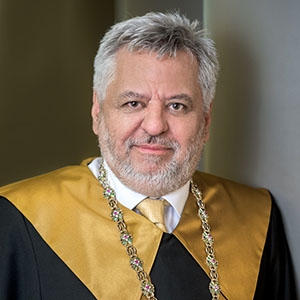 Andras Lanczi ose la question cruciale : « Une constitution peut-elle créer une identité ? (p. 65) » Oui, si on observe les États-Unis; non si l’on regarde les précédents de l’Union Soviétique et de la Yougoslavie titiste. David Engels trace néanmoins les grands traits d’une nouvelle constitution européenne. Il dénonce au préalable le souverainisme stato-national qui amalgame « de manière presqu’insupportable les institutions de l’Union européenne avec l’idée européenne elle-même (p. 21) ». Oui, les nationaux-souverainistes « europhobes » « ignorent […] dangereusement le problème que la civilisation occidentale du XXIe siècle ne pourra survivre que si toutes les nations européennes forment un seul front commun contre les dangers qui pourraient venir de l’Est, de l’Ouest ou du Sud (pp. 21 – 22) ». Ces anti-européens condamnent les institutions alors que la responsabilité de leur nuisance incombe à des personnes telles Jacques Santer, José Manuel Barroso ou Josef Borrel (4).
Andras Lanczi ose la question cruciale : « Une constitution peut-elle créer une identité ? (p. 65) » Oui, si on observe les États-Unis; non si l’on regarde les précédents de l’Union Soviétique et de la Yougoslavie titiste. David Engels trace néanmoins les grands traits d’une nouvelle constitution européenne. Il dénonce au préalable le souverainisme stato-national qui amalgame « de manière presqu’insupportable les institutions de l’Union européenne avec l’idée européenne elle-même (p. 21) ». Oui, les nationaux-souverainistes « europhobes » « ignorent […] dangereusement le problème que la civilisation occidentale du XXIe siècle ne pourra survivre que si toutes les nations européennes forment un seul front commun contre les dangers qui pourraient venir de l’Est, de l’Ouest ou du Sud (pp. 21 – 22) ». Ces anti-européens condamnent les institutions alors que la responsabilité de leur nuisance incombe à des personnes telles Jacques Santer, José Manuel Barroso ou Josef Borrel (4).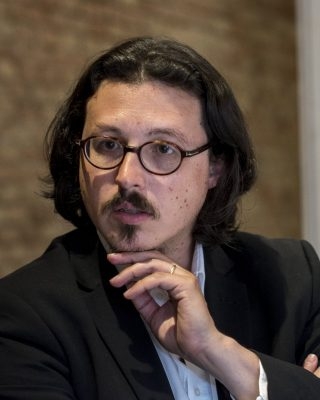 Bien que désigné par le suffrage universel direct, ce président de l’Union rénovée ne bénéficie que de pouvoirs limités. « D’un côté, le Président se consacrerait à la politique extérieure, représentant l’Union européenne au Conseil de sécurité permanent des Nations Unies (sur base d’une fédéralisation du siège français), et, en cas de conflit, dirigerait les opérations des forces européennes. D’un autre côté, le Président tenterait de régler les conflits qui se présenteraient soit entre nations européennes, soit entre celles-ci et l’Union elle-même, en présidant une cour d’arbitrage permanente dont le composition et le mode de scrutin devraient, une fois de plus, favoriser le compromis et l’unanimité (p. 197). » La nouvelle Union européenne, on le voit, dispose d’« une force militaire européenne, composée, en temps de paix, par un cœur d’unités proprement européennes, appuyées par des contingents fixes des différents États-nations et dotées de capacités nucléaires (p. 198) ». Dans ces conditions, « l’Europe pourrait, à nouveau, devenir un véritable “ Sacrum Imperium ” et renouer avec sa dimension transcendantale, perdue depuis longtemps au profit du rationalisme, du matérialisme, du relativisme et du cynisme (p. 204) ». David Engels expose rapidement les bases géopolitiquement instables pour cause d’atlantisme d’une Confédération européenne.
Bien que désigné par le suffrage universel direct, ce président de l’Union rénovée ne bénéficie que de pouvoirs limités. « D’un côté, le Président se consacrerait à la politique extérieure, représentant l’Union européenne au Conseil de sécurité permanent des Nations Unies (sur base d’une fédéralisation du siège français), et, en cas de conflit, dirigerait les opérations des forces européennes. D’un autre côté, le Président tenterait de régler les conflits qui se présenteraient soit entre nations européennes, soit entre celles-ci et l’Union elle-même, en présidant une cour d’arbitrage permanente dont le composition et le mode de scrutin devraient, une fois de plus, favoriser le compromis et l’unanimité (p. 197). » La nouvelle Union européenne, on le voit, dispose d’« une force militaire européenne, composée, en temps de paix, par un cœur d’unités proprement européennes, appuyées par des contingents fixes des différents États-nations et dotées de capacités nucléaires (p. 198) ». Dans ces conditions, « l’Europe pourrait, à nouveau, devenir un véritable “ Sacrum Imperium ” et renouer avec sa dimension transcendantale, perdue depuis longtemps au profit du rationalisme, du matérialisme, du relativisme et du cynisme (p. 204) ». David Engels expose rapidement les bases géopolitiquement instables pour cause d’atlantisme d’une Confédération européenne.
